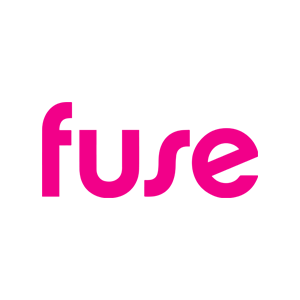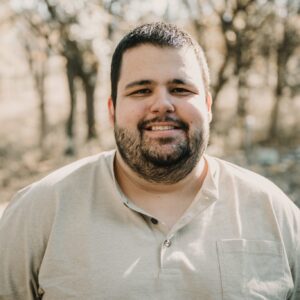Brain Drain: A Catalyst For L&D
Brain drain is a term that emerged in the sixties when Britain witnessed a mass exodus of its scientists to the USA. Today, perhaps the more politically correct term is "brain mobility" in referring to the global circulation of knowledge, but regardless of whether you’re talking about countries or companies, you’ve got to admit that you’re not winning when knowledge leaves your borders or your buildings.
It’s something all companies are acutely aware of because of the cost and risk associated with human capital flight. According to the global employment company, Monster, the average annual staff turnover rate in the UK is 15%. Google "employee churn" and you’ll be met with many grim realities surrounding significant drops in company performance related to the loss not just of skilled people but of the learned-on-the-job knowledge that they apply to their jobs daily.
Not to worry though, you aren’t alone. Even the IBMs, Microsofts, and Apples of the world have some difficulty retaining their most valued employee groups. The power is in what you decide to do about it, and luckily, learning platforms like Fuse are perfectly positioned to help. Read on to hear how we’re making sure that knowledge lives on long after valued employees move on.
Solving The Knowledge Brain Drain Conundrum
Many learning platforms use course-based learning environments focused on delivering formal learning, which is usually made up of explicit knowledge—the stuff of encyclopedias, textbooks, and SOP manuals.
In order to scale their offerings, many companies buy vast libraries of explicit knowledge. The thing is, if you’re only using explicit knowledge for learning, brain drain may be the least of your problems. This knowledge often lacks organizational context, which is key to enabling quicker comprehension and skill-building.
Fuse was originally built as a social learning platform, so we’ve always backed tacit knowledge from experts as the most valuable knowledge that you can have because it’s contextually relevant; it’s from an expert who understands the context of your environment. Tacit knowledge can be defined as intuitive knowledge and know-how, which is rooted in context, experience, practice, and values.
It’s one of the foundational elements that make Fuse so effective. However, the classic problem with tacit knowledge is that it tends to sit inside people’s heads. And when people leave a company, that knowledge also goes with them. However, it’s not just luck that we’ve overcome this issue through many years of applied practice in optimized learning, and a content methodology that is really helping to solve the loss of knowledge across the enterprise.
Fuse: Bringing Out The Best In People
Fuse becomes extremely valuable in its capacity as a tool to extract different types of knowledge from people in order to codify it and retain it. Don’t worry, it’s not the stuff of sci-fi, we’re simply giving users the tools to be able to contribute knowledge to the platform in a way that is very easy and very powerful.
It doesn’t have to be traditional content such as videos or articles or PowerPoint presentations. It could be as simple as content recorded off of an expert contributing to conversations and contributing their tacit knowledge in this way. Fuse hosts some great conversations, and everyone is able to easily consume and learn from them. Experts can contribute their own thoughts on best practices or challenging conventions so as to move the collective thinking forward.
We're also using techniques that people deploy across social media to be able to very quickly create an article or just quickly record themselves explaining a process. It’s about getting the tacit knowledge from the experts quickly and easily.
It’s quite different from what you see with traditional L&D platforms, which are limiting themselves to explicit knowledge, neglecting tacit knowledge, and finding themselves with quite significant problems when it comes to scaling. The issue is frequently rooted in the fact that they are still clinging to a traditional learning mentality that is very control-based in its approach. To easily scale the amount of knowledge and make learning and tacit knowledge flow continuously throughout an organization, L&D needs to let go of that.
If we’re focusing on the free flow of tacit knowledge, it can’t be a three-month process to get it into a platform. L&D can’t be the gatekeepers for all knowledge. Companies need to give back more control to the crowd and let people upload their content. It’s about allowing the crowd to create more content, and then be able to cherry-pick and curate the best from the crowd as well, and bring that back into the curated experiences.
Curation: The Cure-All?
Speaking of curated experiences, there’s a number of things that we are doing that helps to embed tacit knowledge further throughout organizations. The most effective though is when we teach our clients how to take tacit knowledge to the next level using our content methodology.
Many of those with the highest engagement rates are turning tacit knowledge into compelling videos that speak directly to people, which helps the learning to be comprehended that much easier. You can read more about the importance of curation here.
The main point is that when you get the balance right, you allow people to create User-Generated Content and get that tacit knowledge to the platform and get people accessing it, sharing it, and retaining it.
Crawling, Running, And Walking With Tacit Knowledge
We’re not going to pretend that the tacit knowledge waterfall and content curation machine are something that can be switched on to work instantly. You can’t magically create a culture; you need to work with the pockets of an organization that understand it best first, and breed a core approach to having a high-impact learning experience as well as programs that you can realistically create.
To do this, we help clients by building value maps that focus on the problems they are trying to solve, and what success looks like for their learning experience. Our expertise is in showing companies that there are different, better, and more engaging ways to learn and that you can start to scale as you move from program to program.
Ultimately, tacit knowledge is the real key to winning in the battle of expert knowledge retention across a business. But companies need to make better use of their experts to achieve this. They are the ones at the cutting edge, and they are the ones that are going to keep up to date and upskill everybody.
A long-term approach to retaining tacit knowledge despite the natural transient nature of any workforce is going to be based on making it easy to contribute and access knowledge; it needs to become a habit. When it does, companies may find themselves much less susceptible to brain drain and in possession of a learning culture that is both effective and highly scalable.
Are you struggling to develop a learning strategy that focuses on the learner, and do you want to better understand what learners need from learning programs to be engaged and successful? Check out our latest research paper, "Learner Engagement and Performance: From Correlation to Causation," produced in partnership with Brandon Hall.










